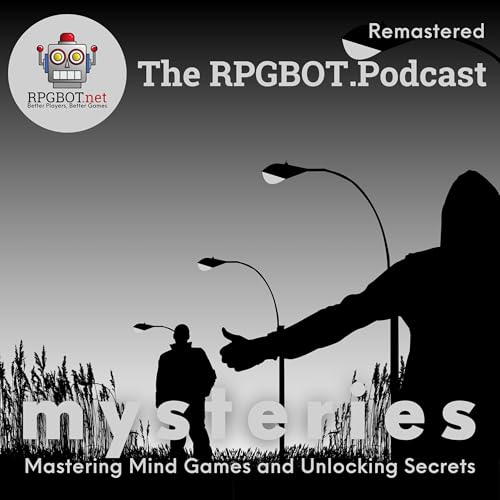Show Notes In this episode of the RPGBOT.Podcast, the crew dives into Part 2 of their comprehensive review of Forgotten Realms: Heroes of Faerûn, focusing on the new Background, Feats, and Epic Boons.
Join the RPGBOT Patreon If you've been enjoying our deep-dive breakdowns of Heroes of Faerûn, laughing through our subclass hot takes, or nodding solemnly during our very serious sandwich discourse, then you're exactly the kind of hero who belongs in the RPGBOT Patreon community.
And here's the thing—if you'd already been a Patreon subscriber, you could have asked Keith Ammann your own questions live during our most recent Masterclass. Our patrons get real-time access not only to incredible guests like Keith, but also to Tyler, Randall, and Ash, asking questions, shaping discussions, and becoming part of the show as it happens.
You also get ad-free episodes, early access, bonus content, and a seat at the virtual table for future live recordings.
Join the RPGBOT Patreon today, and next time you won't just listen—you'll be part of the conversation.
Welcome to the RPGBOT Podcast. If you love Dungeons & Dragons, Pathfinder, and tabletop RPGs, this is the podcast for you.
Support the show for free: Rate and review us on Apple Podcasts, Spotify, or any podcast app. It helps new listeners find the best RPG podcast for D&D and Pathfinder players.
Level up your experience: Join us on Patreon to unlock ad-free access to RPGBOT.net and the RPGBOT Podcast, chat with us and the community on the RPGBOT Discord, and jump into live-streamed RPG podcast recordings.
Support while you shop: Use our Amazon affiliate link at https://amzn.to/3NwElxQ and help us keep building tools and guides for the RPG community.
Meet the Hosts -
Tyler Kamstra – Master of mechanics, seeing the Pathfinder action economy like Neo in the Matrix.
-
Randall James – Lore buff and technologist, always ready to debate which Lord of the Rings edition reigns supreme.
-
Ash Ely – Resident cynic, chaos agent, and AI's worst nightmare, bringing pure table-flipping RPG podcast energy.
Join the RPGBOT team where fantasy roleplaying meets real strategy, sarcasm, and community chaos.
How to Find Us:
In-depth articles, guides, handbooks, reviews, news on Tabletop Role Playing at RPGBOT.net
Tyler Kamstra - BlueSky: @rpgbot.net
- TikTok: @RPGBOTDOTNET
Ash Ely - Professional Game Master on StartPlaying.Games
- BlueSky: @GravenAshes
- YouTube: @ashravenmedia
Randall James - BlueSky: @GrimoireRPG
- Amateurjack.com
- Read Melancon: A Grimoire Tale (affiliate link)
Producer Dan
 Dec 18 20251 h y 5 m
Dec 18 20251 h y 5 m Dec 15 202555 m
Dec 15 202555 m 1 h y 3 m
1 h y 3 m 1 h y 9 m
1 h y 9 m Dec 8 20251 h y 26 m
Dec 8 20251 h y 26 m Dec 6 20251 h y 1 m
Dec 6 20251 h y 1 m 1 h y 6 m
1 h y 6 m 1 h y 2 m
1 h y 2 m
